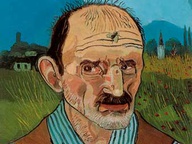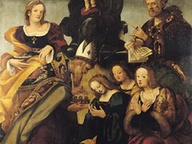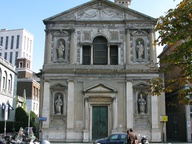There was once Russia. The look of Ivan Glazunov
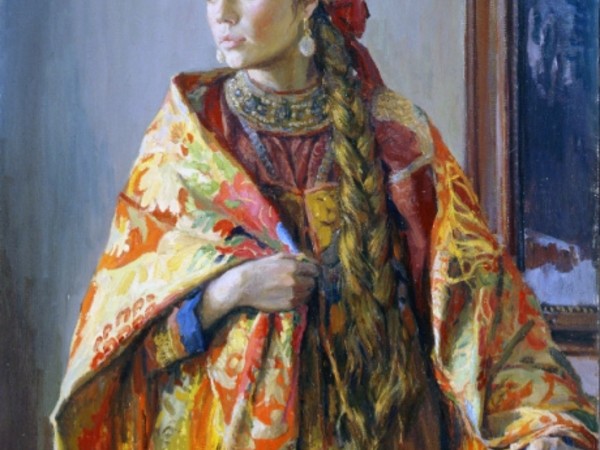
C’era una volta la Russia. Lo sguardo di Ivan Glazunov, Fondazione Querini Stampalia, Venezia
From 15 Ottobre 2014 to 11 Gennaio 2015
Venice
Place: Querini Stampalia Foundation
Address: Castello 5252
Responsibles: Silvia Burini, Giuseppe Barbieri
Telefono per informazioni: +39 041 2711411
E-Mail info: fondazione@querinistampalia.org
Official site: http://www.querinistampalia.org
The exhibition comes from research and personal collection of the painter Ivan Glazunov.
His manner of painting was often associated with the great traditions of European schools of painting, and the central theme of his work is dedicated to the progressive disappearance of the traditional values ??that are the basis of Russian culture and European.
With this exhibition, Glazunov wants to share with the public a European staff, but in reality increasingly widespread cultural concern, the one that originates from the incessant destruction of historical and cultural links that have characterized our civilization for many centuries.
Like many other artists of his country, Glazunov is interested in the peculiarities of national cultures, languages ??and historical paths ..., starting with those of his land.
"Everything that has been created up to us - notes Glazunov - and that we have inherited, it is the richness and diversity of our common civilization. Always Russia has kept the memory of his past, and with it the ability to make a living its tradition of our people came to the tragic events of the twentieth century. now, after having survived the revolution, the war, the Soviet regime, we're looking at us the strength to continue, remembering the cultural genetic code that sustains us for centuries. Just now, when the world is changing impetuously and we live in a powerful and aggressive information flow. We need to preserve our original values, which have supported us in every moment: they are the pivot that allowed us not to lose, which kept our image as a people. want to show what is dear to me in Russia, what I love. throughout my life, I have collected and studied Russian antiques, each one of them can tell us about the people who lived centuries ago or Even more recently ... these signs have created the image of Russia that I love, which is dear to me, which is important to me. I want to keep it for my children and share with the public. "
For this project, including signs and memory, characterized by a strong family, there could be no more fitting venue of the ancient residence of the Querini Stampalia. Founded in 1869, the Foundation complements the rooms of the house museum, its precious collections, rich library, with the spaces of contemporary architecture, designed by Scarpa, Pastor, Botta: evocative manifesto of his mission as a place of cultural border and discussion , between housing and careful research of the past with the new times.
The exhibition, curated by Silvia Burini and Giuseppe Barbieri, responsible for the Center for Studies on the Arts of Russia (CSAR) at the University Ca 'Foscari Venezia, line paintings, ancient customs of Russians exceptional workmanship and precious objects of folk art from the collection of 'artist.
The combination in the same space of paintings, costumes and antiques, each reflected in the other returns, including through unconventional staging and the use of original multimedia devices, the strength and beauty of a past still present, immersing the viewer in contemplation sometimes the majestic intimacy of Russian landscapes or in a series of engaging portraits of women.
An important component of the exhibition, in an effort to set up a special participation of the viewer to the atmosphere of the exhibition is the installation video with footage copyright in the North of Russia (Arkhangelsk region) made ??by the artist and his wife , the director Julija Glazunova. The video installation presents a special and enchanting musical structure created with the collaboration of Andrej Kotov, choirmaster, one of the leading experts in the field of ancient culture Russian musical director and choirmaster of the ensemble "Sirin" (http: //sirin.svyatovo.com).
The celebrated ensemble, under the direction of Andrei Kotov, the exhibition will feature live concerts.
His manner of painting was often associated with the great traditions of European schools of painting, and the central theme of his work is dedicated to the progressive disappearance of the traditional values ??that are the basis of Russian culture and European.
With this exhibition, Glazunov wants to share with the public a European staff, but in reality increasingly widespread cultural concern, the one that originates from the incessant destruction of historical and cultural links that have characterized our civilization for many centuries.
Like many other artists of his country, Glazunov is interested in the peculiarities of national cultures, languages ??and historical paths ..., starting with those of his land.
"Everything that has been created up to us - notes Glazunov - and that we have inherited, it is the richness and diversity of our common civilization. Always Russia has kept the memory of his past, and with it the ability to make a living its tradition of our people came to the tragic events of the twentieth century. now, after having survived the revolution, the war, the Soviet regime, we're looking at us the strength to continue, remembering the cultural genetic code that sustains us for centuries. Just now, when the world is changing impetuously and we live in a powerful and aggressive information flow. We need to preserve our original values, which have supported us in every moment: they are the pivot that allowed us not to lose, which kept our image as a people. want to show what is dear to me in Russia, what I love. throughout my life, I have collected and studied Russian antiques, each one of them can tell us about the people who lived centuries ago or Even more recently ... these signs have created the image of Russia that I love, which is dear to me, which is important to me. I want to keep it for my children and share with the public. "
For this project, including signs and memory, characterized by a strong family, there could be no more fitting venue of the ancient residence of the Querini Stampalia. Founded in 1869, the Foundation complements the rooms of the house museum, its precious collections, rich library, with the spaces of contemporary architecture, designed by Scarpa, Pastor, Botta: evocative manifesto of his mission as a place of cultural border and discussion , between housing and careful research of the past with the new times.
The exhibition, curated by Silvia Burini and Giuseppe Barbieri, responsible for the Center for Studies on the Arts of Russia (CSAR) at the University Ca 'Foscari Venezia, line paintings, ancient customs of Russians exceptional workmanship and precious objects of folk art from the collection of 'artist.
The combination in the same space of paintings, costumes and antiques, each reflected in the other returns, including through unconventional staging and the use of original multimedia devices, the strength and beauty of a past still present, immersing the viewer in contemplation sometimes the majestic intimacy of Russian landscapes or in a series of engaging portraits of women.
An important component of the exhibition, in an effort to set up a special participation of the viewer to the atmosphere of the exhibition is the installation video with footage copyright in the North of Russia (Arkhangelsk region) made ??by the artist and his wife , the director Julija Glazunova. The video installation presents a special and enchanting musical structure created with the collaboration of Andrej Kotov, choirmaster, one of the leading experts in the field of ancient culture Russian musical director and choirmaster of the ensemble "Sirin" (http: //sirin.svyatovo.com).
The celebrated ensemble, under the direction of Andrei Kotov, the exhibition will feature live concerts.
SCARICA IL COMUNICATO IN PDF
COMMENTI

-
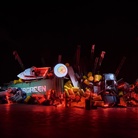 Dal 27 marzo 2025 al 27 luglio 2025
Milano | Pirelli HangarBicocca
Dal 27 marzo 2025 al 27 luglio 2025
Milano | Pirelli HangarBicocca
-
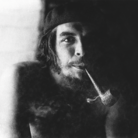 Dal 27 marzo 2025 al 30 giugno 2025
Bologna | Museo Civico Archeologico
Dal 27 marzo 2025 al 30 giugno 2025
Bologna | Museo Civico Archeologico
-
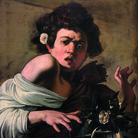 Dal 27 marzo 2025 al 20 luglio 2025
Firenze | Villa Bardini
Dal 27 marzo 2025 al 20 luglio 2025
Firenze | Villa Bardini
-
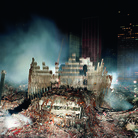 Dal 25 marzo 2025 al 24 agosto 2025
Brescia | Museo di Santa Giulia
Dal 25 marzo 2025 al 24 agosto 2025
Brescia | Museo di Santa Giulia
-
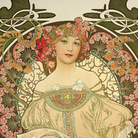 Dal 22 marzo 2025 al 20 luglio 2025
Ferrara | Palazzo dei Diamanti
Dal 22 marzo 2025 al 20 luglio 2025
Ferrara | Palazzo dei Diamanti
-
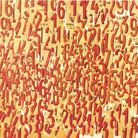 Dal 22 marzo 2025 al 08 giugno 2025
Venezia | Ca’ Pesaro – Galleria Internazionale d’Arte Moderna
Dal 22 marzo 2025 al 08 giugno 2025
Venezia | Ca’ Pesaro – Galleria Internazionale d’Arte Moderna
